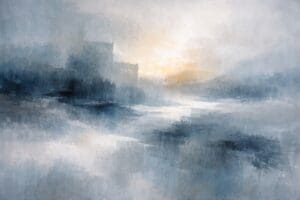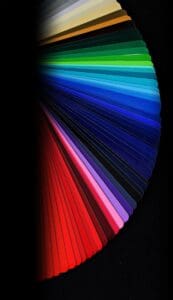How to Paint Seasonal Landscapes in Acrylic
Painting landscapes in acrylic is a rewarding and versatile endeavor, allowing artists to capture the beauty and essence of nature throughout the changing seasons. Each season offers unique colors, moods, and compositions, making it an exciting challenge for artists. In this article, we will explore various techniques and tips to help you paint captivating seasonal landscapes. We will also delve into blending abstract elements with traditional landscapes, experimenting with unconventional tools and methods, and drawing inspiration from contemporary landscape artists.
Blending Abstract Elements with Traditional Landscapes
Understanding the Balance
Combining abstract elements with traditional landscapes can create visually stunning and thought-provoking pieces. This approach allows artists to push the boundaries of conventional landscape painting while maintaining recognizable elements of nature. The key is to find a balance between abstraction and realism.
Start with a Realistic Base
Begin by sketching the basic composition of your landscape. Use reference photos or paint en plein air to capture the scene. This realistic base will serve as the foundation for your abstract elements. Focus on the main elements such as the horizon, prominent trees, mountains, or bodies of water.
Introduce Abstract Elements
Once you have the realistic base, start introducing abstract elements. This can be done through various techniques:
- Color Blocking: Use bold, non-natural colors to highlight certain areas of your landscape. For example, paint the sky in vibrant pinks and oranges instead of traditional blues and grays.
- Geometric Shapes: Incorporate geometric shapes like circles, triangles, or squares to break the monotony of organic forms. These shapes can overlap with natural elements to create an interesting juxtaposition.
- Textured Layers: Add texture to your painting using palette knives, sponges, or even household items like bubble wrap. Layer these textures over realistic parts of your landscape to create depth and intrigue.
Examples of Abstract Landscapes
Look to contemporary artists who blend abstract elements with traditional landscapes for inspiration. Artists like Gerhard Richter and Cecily Brown are known for their ability to merge abstraction with recognizable forms. Studying their work can provide valuable insights into this technique.
Online Resources
Experimenting with Unconventional Tools and Methods
Why Experiment?
Experimentation in art leads to innovation and personal growth. Using unconventional tools and methods can help you discover new textures, effects, and techniques that enhance your landscape paintings.
Unconventional Tools
Here are some tools beyond the traditional brush that you can use:
- Palette Knives: Great for creating sharp edges and textured layers.
- Sponges: Perfect for blending and creating soft, cloud-like effects.
- Bubble Wrap: Use this to create interesting patterns and textures in foliage or water.
- Credit Cards: Old credit cards can be used to scrape paint across the canvas, creating unique lines and textures.
- Feathers and Leaves: Natural elements can be used as stamps to add organic textures to your landscapes.
Unconventional Methods
- Pouring Techniques: Pouring thinned acrylic paint onto the canvas can create marbled effects that resemble natural landscapes.
- Dripping and Splattering: This can be particularly effective for adding spontaneity to your skies or foliage.
- Layering and Glazing: Build up thin layers of paint to create depth and luminosity. This technique works well for capturing the transient light of different seasons.
Examples and Tutorials
There are numerous online resources and tutorials available to help you get started with these unconventional tools and methods:
Inspiration from Contemporary Landscape Artists
The Importance of Inspiration
Drawing inspiration from contemporary artists can breathe new life into your own work. Contemporary landscape artists often push the boundaries of traditional landscape painting, offering fresh perspectives and techniques.
Notable Contemporary Landscape Artists
David Hockney
David Hockney’s vibrant and colorful landscapes are a testament to his innovative use of color and form. His works often blend realism with abstract elements, making them a great source of inspiration.
Anselm Kiefer
Anselm Kiefer’s landscapes are known for their textured, almost sculptural quality. His use of unconventional materials and techniques adds depth and complexity to his work.
Julie Mehretu
Julie Mehretu’s abstract landscapes incorporate architectural elements and layers of marks and lines. Her dynamic compositions are a fascinating study in blending abstraction with hints of reality.
Applying Inspiration
When drawing inspiration from contemporary artists, try to analyze what specifically resonates with you. Is it their use of color, their composition, or their technique? Use these elements as a starting point for your own work.
Online Galleries and Exhibitions
Explore online galleries and virtual exhibitions to discover a wide range of contemporary landscape art
Painting Seasonal Landscapes
Spring Landscapes
Spring is a season of renewal and growth. To capture the essence of spring in your landscapes:
- Color Palette: Use fresh greens, vibrant yellows, and soft pinks.
- Techniques: Incorporate fine details to depict blossoming flowers and new leaves. Use sponges to create soft, fluffy clouds.
- Composition: Focus on scenes of blooming gardens, meadows, and budding trees.
Summer Landscapes
Summer landscapes are characterized by their warmth and brightness:
- Color Palette: Use bright blues, rich greens, and warm earth tones.
- Techniques: Experiment with pouring techniques to capture the fluidity of water and the movement of the wind. Use palette knives for sharp, defined edges.
- Composition: Paint beach scenes, lush forests, and sunny fields.
Autumn Landscapes
Autumn is known for its rich and warm colors:
- Color Palette: Use deep reds, oranges, and golden yellows.
- Techniques: Layering and glazing techniques work well to capture the depth of autumnal foliage. Use spattering techniques to add texture to leaves.
- Composition: Focus on scenes of forests, harvest fields, and falling leaves.
Winter Landscapes
Winter landscapes are serene and often monochromatic:
- Color Palette: Use cool blues, grays, and whites.
- Techniques: Use credit cards or palette knives to create sharp, icy textures. Experiment with dripping techniques to depict snowfall.
- Composition: Paint snow-covered landscapes, frozen lakes, and bare trees.
Conclusion
Painting seasonal landscapes in acrylic is a journey through nature’s beauty, filled with opportunities for creativity and experimentation. By blending abstract elements with traditional landscapes, experimenting with unconventional tools and methods, and drawing inspiration from contemporary landscape artists, you can create unique and captivating works of art. Embrace the changing seasons and let your creativity flow with the colors, textures, and moods of each time of year.
For more tutorials and inspiration, visit these resources:
Happy painting!
By incorporating these elements and resources, you can enhance your acrylic landscape paintings and capture the essence of each season in your artwork.
*For collaborations, art features, or inquiries, please contact us at [email protected]. Don’t forget to follow us on Instagram, Facebook, Twitter.
Disclaimer: The views and opinions expressed in this article do not necessarily reflect the official policy or position of Irish Artmart.




